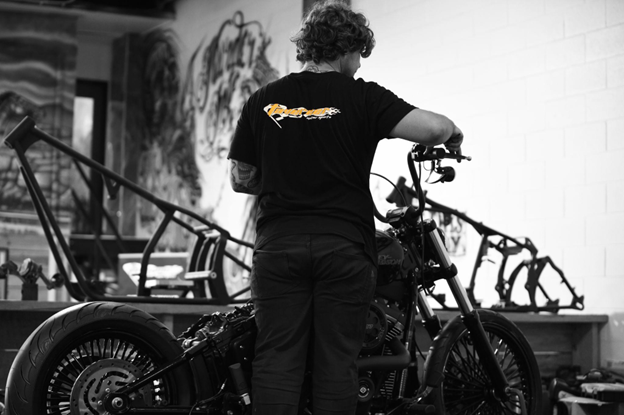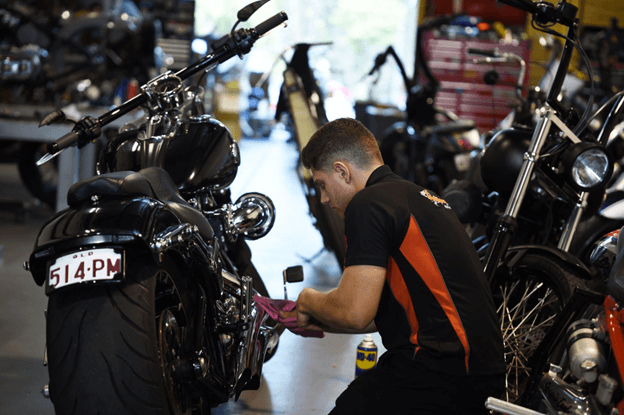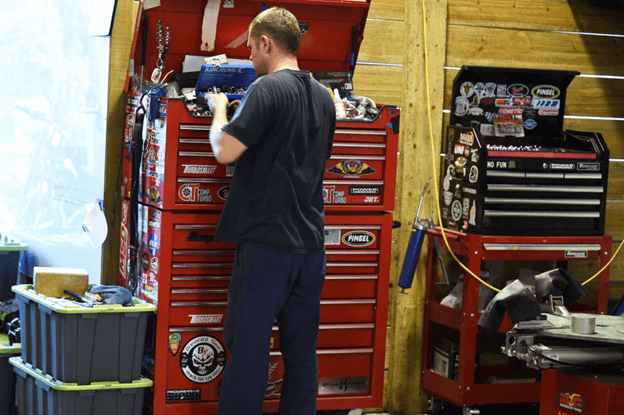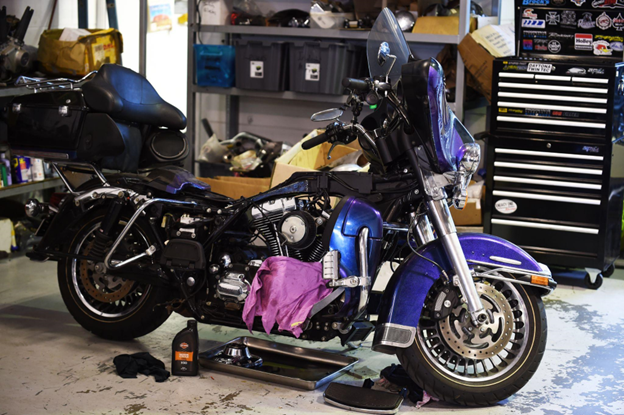Most of the fuel your motorcycle runs on gets dissipated as heat. To manage that heat, coolant is necessary. Just like a car, your motorbike’s engine requires coolant to keep its running temperature optimal and prevent it from overheating. Just like every other liquid in your motorcycle, the coolant needs to be changed periodically.
You should carry out a coolant flush and change at least every two years, once a year if you’re a regular rider, and closer to every six months if you’re a racer. It’s best to refer to your motorcycle owner’s manual to be sure.
You can change your coolant, like your oil, in your garage as long as you know what you’re doing. But there’s work involved. You’ll need to track down the right coolant, find the right tools and supplies, and avoid the mistakes that could harm your engine or you. An easier option is to book a coolant flush and change with a motorcycle mechanic in Brisbane.
After 40+ years working on motorcycles of all kinds, a coolant flush and change is simple for the Taverner Motorsports team. We can take care of every aspect of motorbike maintenance you can think of, treating your bike with the same care that we’d apply to one of our own so that you can get on with your life.
A coolant change may sound like a small job, but leaving it in the hands of a pro can make a big difference. We’ll take you through what’s involved in a typical coolant flush and change and how the Taverner team can help.

Signs Your Coolant Needs To Be Flushed
Changing your coolant regularly is an important part of motorbike maintenance. Signs that your bike is due for a coolant flush and change include:
It’s past your service interval
Usually, changing your coolant once a year is enough. But you should organise a coolant change ASAP if it’s been longer than that. And if it’s been longer than two years, it’s way past overdue. Taking the time to change your bike’s coolant or booking an appointment with a motorcycle mechanic in Brisbane who can do it will help prevent problems before they occur.
Your coolant has boiled
Boiled coolant is a sign that your bike has overheated and it’s time to replace the coolant.
Low coolant level
You can check your coolant level to see if you’re due for a top-up. Most motorbike coolant reservoirs have two lines that function as a coolant level indicator, and the optimum level falls between those two lines.
Brown or murky coolant
If your coolant has turned the colour of rust, that’s a sure sign it has become contaminated. To avoid engine damage, flush it straight away. Dark or milky coolant can be a sign of problems with your head gasket.
Whether you change your coolant yourself or book an appointment with a motorcycle mechanic in Brisbane, these are all signs that you shouldn’t ignore.

How to Flush and Change Coolant
Here’s a short explanation of the process of flushing and changing your coolant.
Make sure you have the right equipment
Some examples include the service manual (for the type of coolant and anything else specific to the model of the bike), a gallon of distilled water for mixing and flushing, a drain pan and a small funnel.
Make sure the engine is cold
Never take off your radiator cap when the bike is still hot, as it can cause severe burns.
Drain the coolant
Place your drain pan beneath your bike’s water pump. Take out your coolant drain plug, and the coolant will begin to dribble out. Remove the cap on your radiator, and the coolant should start to flow faster.
Get your new coolant ready
Different coolants are dyed different colours to make them easier to identify. You should never mix different types of coolants together. Pre-diluted coolant is ready to go in straight away, but otherwise, you’ll need some distilled water. Regular tap water can be very bad for your bike’s cooling system.
Shake out the leftover coolant
When most of the old coolant is out of your motorbike, stand it up and shake it from side to side to get rid of the rest. You can then use plain distilled water to rinse out and drain the system again.
Flush out the reservoir tank
The reservoir tank is a clear plastic container that’s usually tucked somewhere near the engine or the tail of the bike. You’ll want to remove any leftover coolant or sediment stuck inside of it.
Coolant and radiator flush (optional)
This is when you flush the system to clear out any scale or rust before adding the fresh coolant. Rather than using harsh chemicals, it’s best to use gentler mixtures like a 50/50 combo of vinegar and water. Run the bike until the radiator fan starts, then turn it off and wait for it to cool to room temperature. Drain the mix and then flush it again with distilled water alone.
Add the fresh coolant
It’s best to use a funnel to avoid any spills. Pour slowly until you hear a gurgling sound. When the sound stops, start pouring again. Squeeze the hoses and gently rock the bike side to side to get rid of the air bubbles. Once you’ve filled up the system, leave the radiator cap off for a minute and run the bike to get rid of any remaining air bubbles. Turn the bike off and check your levels again. Add more coolant if necessary, and fill the reservoir tank to the line too.
Dispose of the old motorcycle coolant
Coolant is one of those substances that should never be poured down the drain. Instead, you should bottle your used coolant and take it to your closest recycling centre.
If it all sounds a little complicated or more than you have time for, there’s nothing wrong with hiring a professional.

Why Get a Professional
Here are some reasons you should book a professional to carry out your coolant flush and change:
- A professional has tonnes of experience in motorbike maintenance. They can get the job done quickly and pick up on things you may miss if it’s new to you.
- A professional is highly trained, knows the right kind of coolant to use and won’t make any costly or dangerous mistakes.
- A professional has the right tools and equipment on hand, saving you a big shopping trip before you flush your coolant for the first time.
- The work is covered under warranty.
- You can save yourself a lot of time, effort and hassle.
- While you’re there, you can also get your bike serviced or have other performance or modification work done.
So where should you turn for a coolant flush and change?

Get Your Motorbike Serviced at Taverner Motorsports
You can book a coolant flush and change at Taverner Motorsports on Brisbane’s northside.
Taverner is skilled in all aspects of motorbike maintenance, including workshop services (which includes regular bike servicing) and performance work.
If you’ve been looking for an experienced motorcycle mechanic in Brisbane, we’ve been building our skills and our relationships with clients and customers since 1975. From our early days in the town of Bathurst, NSW, to our current location in Bowen Hills in inner Brisbane, we’ve been working on a range of motorcycles – Japanese, American, British etc. – to get them performing at the highest level possible.
To do that, we work with only the best in the business. Over the years, we’ve built up a worldwide network of parts suppliers that can provide the goods for jobs large and small.
Whether you want to boost your bike’s performance or you just require a little routine maintenance, request a quote from Taverner.
